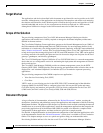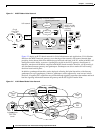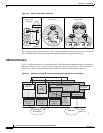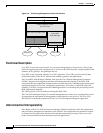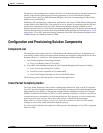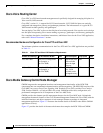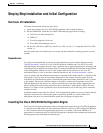Special offers from our partners!

Find Replacement BBQ Parts for 20,308 Models. Repair your BBQ today.

2-2
Cisco Internet OSS for VoIP: Infrastructure Manager Implementation Guide
OL-2706-01
Chapter 2 Provisioning
Overview
Target Market
The applications and devices described in this document are positioned for service provider scale, VoIP
networks. Although many of the applications can be deployed in enterprises and smaller scale networks,
the solution suite referred to in this Solution guide is aimed at the large carriers and providers of VoIP
network bandwidth and services. It also concentrates on the devices deployed in a VoIP network,
although non-VoIP devices integral to the VoIP network must also be taken into account.
Scope of the Solution
The provisioning component of the Cisco VoIP: Infrastructure Manager Solution provides the
applications and network level visibility required to manage the distributed telephony architectures
detailed in the next sections.
The Cisco Packet Telephony Center application operates at the Network Management Layer (NML) of
the Telecommunications Management Network (TMN) hierarchy. Its most important function is the
realization of a virtual entity view, hiding much of the internal complexity of the OPT network detailed
in the “Solution Architecture” section. The Cisco Voice Routing Center (Cisco VRC) application is used
to help service providers manage dial plans for H.323 based VoIP networks. Cisco VRC can be applied
to existing networks with working dial plans and can also be used to design new dial plans for the set of
gateways, gatekeepers, and directory gatekeepers.
The Cisco CNS Intelligence Engine 2100 Series (Cisco CNS IE2100 Series) is a network management
device that acts as a configuration service for automating the deployment and management of network
devices and services.
The Cisco MGC Node Manager (CMNM) provides an element management system for the PSTN
Gateway (PGW 2200). CMNM provides alarm processing and performance data collection that can be
displayed in a self contained Graphical User Interface (GUI) or forwarded to upstream processing
applications.
The provisioning component of the CMNM comprises two applications:
• Voice Services Provisioning Tool (VSPT)
• CiscoView.
VSPT is used as a provisioning service for the PGW 2200. VSPT communicates in Man Machine
Language (MML) to the PGW 2200, to configure point codes, link sets and SS7 paths and routes
CiscoView displays and monitors, and provides a GUI for chassis configuration for the Cisco SLT
(c2600 series) and LAN switch (Cisco Catalyst 2900, 5500 and 6509) devices.
Document Purpose
A large collection of documentation, referenced in the “Related Documents” section, covering the
descriptions, installation, and preliminary setup of the applications and components of this Provisioning
Management Solution. The purpose of this chapter is to describe a basic network containing the network
elements that are covered by these applications, install the management applications that comprise the
provisioning application set of the Internet OSS (IOSS) for packet voice networks, complete initial
configuration of those applications, and then use them to provision a sample network.
For detailed, in-depth information on installation and configuration of the individual applications, refer
to the documentation listed in the “Related Documents” section, that is available on Cisco Connection
Online. This chapter attempts to serve as a quick start guide to help you understand the entire
Provisioning Solution and how it fits into the overall Cisco VoIP: Infrastructure Manager Solution.




